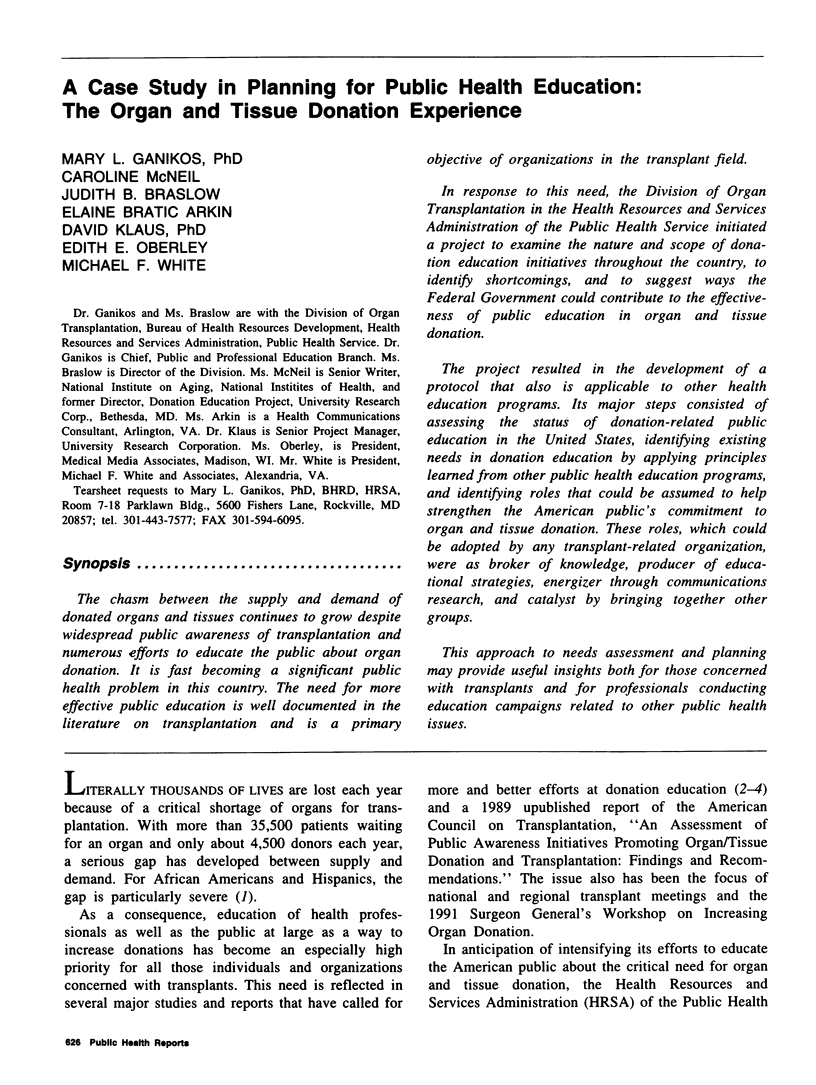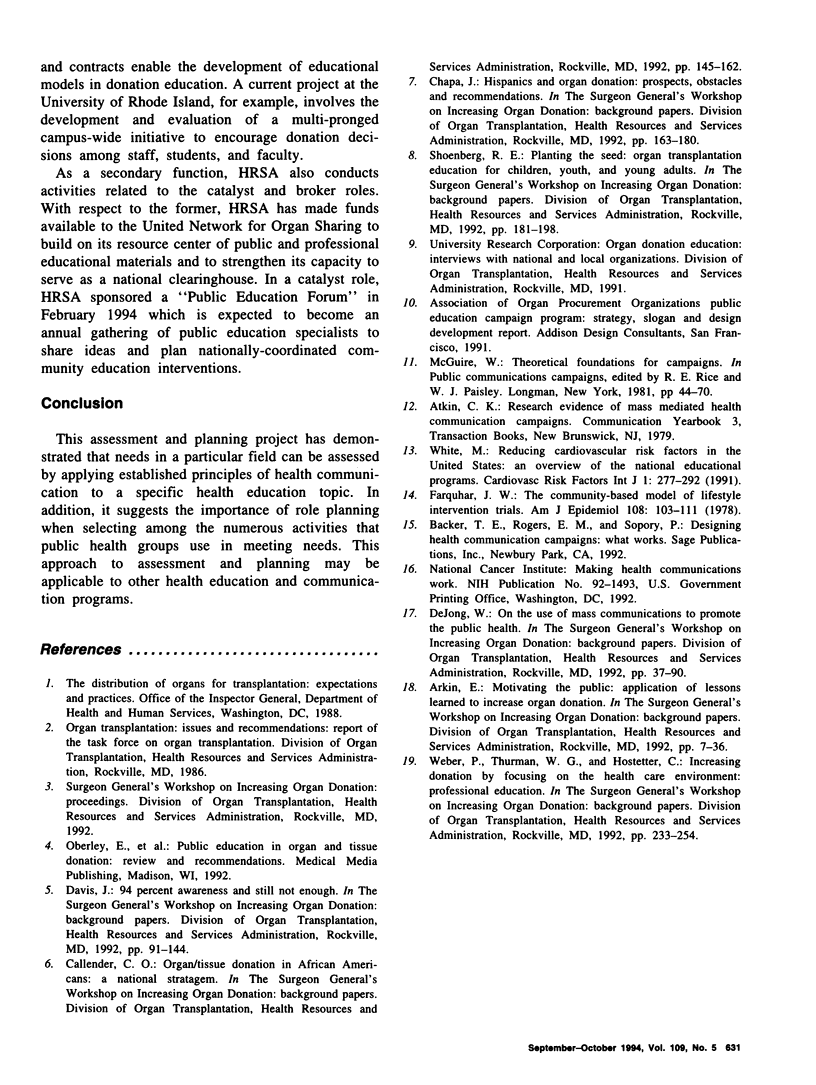Abstract
The chasm between the supply and demand of donated organs and tissues continues to grow despite widespread public awareness of transplantation and numerous efforts to educate the public about organ donation. It is fast becoming a significant public health problem in this country. The need for more effective public education is well documented in the literature on transplantation and is a primary objective of organizations in the transplant field. In response to this need, the Division of Organ Transplantation in the Health Resources and Services Administration of the Public Health Service initiated a project to examine the nature and scope of donation education initiatives throughout the country, to identify shortcomings, and to suggest ways the Federal Government could contribute to the effectiveness of public education in organ and tissue donation. The project resulted in the development of a protocol that also is applicable to other health education programs. Its major steps consisted of assessing the status of donation-related public education in the United States, identifying existing needs in donation education by applying principles learned from other public health education programs, and identifying roles that could be assumed to help strengthen the American public's commitment to organ and tissue donation. These roles, which could be adopted by an transplant-related organization, were as broker of knowledge, producer of educational strategies, energizer through communications research, and catalyst by bringing together other groups. This approach to needs assessment and planning may provide useful insights both for those concerned with transplants and for professionals conducting education campaigns related to other public health issues.
Full text
PDF





Selected References
These references are in PubMed. This may not be the complete list of references from this article.
- Farquhar J. W. The community-based model of life style intervention trials. Am J Epidemiol. 1978 Aug;108(2):103–111. doi: 10.1093/oxfordjournals.aje.a112593. [DOI] [PubMed] [Google Scholar]


